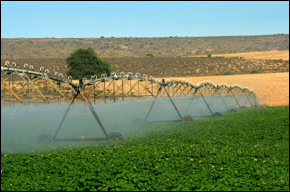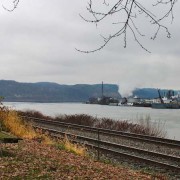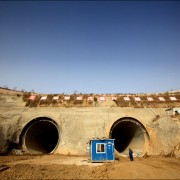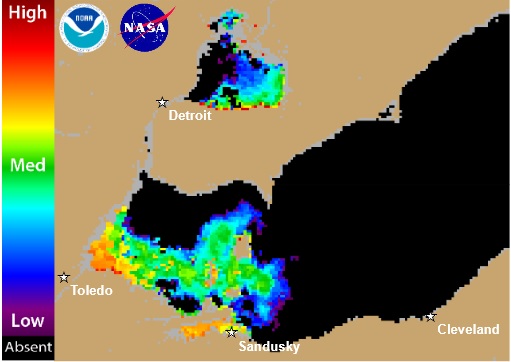Arizona’s Gamble — Conserve Water Now, Prevent Deeper Cuts Tomorrow
For years, the state took as much water as it could from Lake Mead; now it plans to leave some in the reservoir.
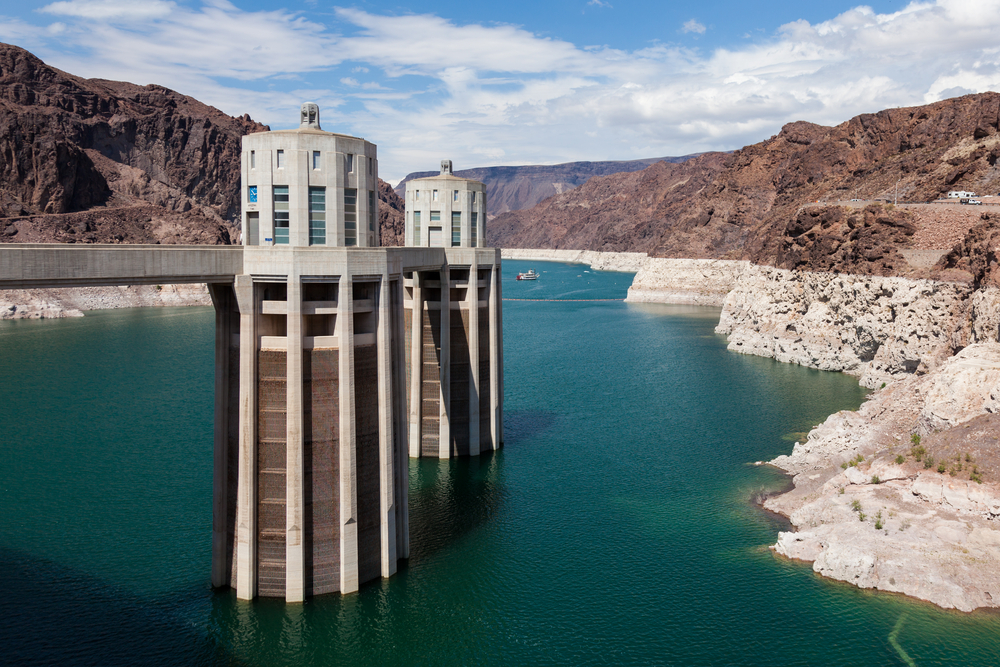
A proposal to leave more of Arizona’s share of the Colorado River in the Lake Mead reservoir above Hoover Dam has been announced by state officials in hopes to avoid more stringent, mandatory cuts, The Arizona Republic reports.
The plan calls for Arizona to give up 80,000 acre-feet—about three percent—out of its 2.8 million acre-foot allotment for 2011. The foregone water, which would be taken from the state’s aquifer recharge program and would not affect any current users, would raise the surface elevation of Lake Mead by one foot.
Though seemingly an insignificant amount, every inch of elevation buys time and space for Arizona, California, and Nevada—the “lower basin states” in the legal code that governs the river. Under an agreement negotiated in 2007, if the lake’s surface elevation falls below 1075 feet, a shortage in the lower basin is declared and deliveries are cut by 323,000 acre-feet.
The brunt of this cut would be shouldered by Arizona, since the state accepted lowest priority on the river in exchange for building the Central Arizona Project which gives the state access to the Colorado River. Some of the CAP water taken from the Colorado River is delivered to Arizona’s biggest cities, while a significant portion is poured into an underground water-banking system, where the water soaks into aquifers. Each year, Arizona took its full allotment of water, rather than allowing it to flow downstream to California.
But the day of reckoning comes closer with every dry year. Lake Mead reached 1081 feet in November this year—its lowest level since 1937, when the lake was still being filled. Today, at the start of the winter recharge period, the lake sits at 1086 feet.
As the water level in Lake Mead falls, officials elsewhere in the lower Colorado Basin are scrambling to complete infrastructure projects and sign temporary water deals to prevent the river’s first-ever shortage declaration.
In late October, the U.S. Bureau of Reclamation—the federal agency that manages the dams that form Lake Mead and Lake Powell—filled the newly completed Warren H. Brock Reservoir near the California-Arizona border. Although the $172-million reservoir, with a capacity of 8000 acre-feet, is a tea cup compared to the mega-projects upstream, it will catch water that was ordered by downstream farmers, but was not used because of intervening rain or changes in irrigation schedules.
Officials from the Bureau of Reclamation estimate that the Brock Reservoir could retain 70,000 acre-feet in Lake Mead that otherwise would have been released, according to the Associated Press.
In December, U.S. and Mexican officials signed an agreement to defer water deliveries to Mexico through 2013, while irrigators there repair canal works damaged by an earthquake in April 2010.
Mexico can postpone delivery of up to 260,000 acre-feet in the next three years, reported the Associated Press, and then recover the balance when the canals are better able to carry the load, starting in 2014. Mexico is legally entitled to 1.5 million acre-feet per year from the Colorado.
U.S. officials and water users hope that, by that time, the water level in Lake Mead will have risen well above the shortage threshold.
Arizona will decide whether to go ahead with its proposed water plan in April, when preliminary runoff projections for the Colorado River are available.
Source: Arizona Republic, Bloomberg, San Jose Mercury News

Brett writes about agriculture, energy, infrastructure, and the politics and economics of water in the United States. He also writes the Federal Water Tap, Circle of Blue’s weekly digest of U.S. government water news. He is the winner of two Society of Environmental Journalists reporting awards, one of the top honors in American environmental journalism: first place for explanatory reporting for a series on septic system pollution in the United States(2016) and third place for beat reporting in a small market (2014). He received the Sierra Club’s Distinguished Service Award in 2018. Brett lives in Seattle, where he hikes the mountains and bakes pies. Contact Brett Walton


